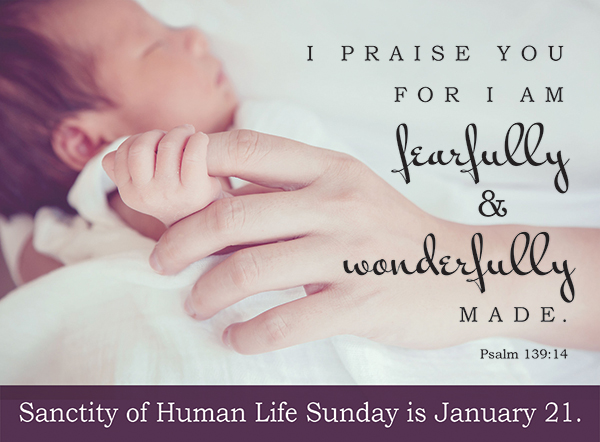By Denise George
Special to The Alabama Baptist
Since 1973, when the Supreme Court made its landmark decision in Roe v. Wade, almost 60 million abortions have been performed in the United States. Today’s experts estimate that more than 900,000 abortions are performed in the U.S. each year.
Despite recent declines, abortion is still a common procedure. The Guttmacher Institute states that 1 in 4 women (23.7 percent) will have an abortion by age 45. Women in their 20s account for the majority of abortions, and more than 30 percent of these women identified themselves as mainline or evangelical Protestant.
Obtaining an abortion in Alabama is difficult — the state has some of the nation’s most significant abortion restrictions. During the ’80s and ’90s, Alabama had more than a dozen abortion clinics, but now it has fewer than five. In April 2016 the state prohibited persons and institutions from accepting compensation for fetal organs, tissue or remains for research, experimentation or transplantation.
Dismemberment abortions
In May 2016, Alabama passed and enacted a ban on dilation and evacuation abortions, which the legislation referred to as dismemberment abortions.
In 2015, 5,899 abortions were performed in Alabama. In 2006 the number of abortions in the state peaked at 11,654. From 2009 to 2015 each year saw a decline in the number of abortions performed in Alabama.
In 2016 the number of abortions performed was 6,642. West Alabama Women’s Center in Tuscaloosa performed about half of those abortions, according to numbers provided by Sue Turner, executive director of Alabama Physicians for Life.
As of July 1, 2017, Alabama has placed new and stricter restrictions on abortions, including:
• State-directed counseling for women that discourages abortion and a 48-hour waiting period before any procedures can take place.
• An ultrasound before an abortion is allowed.
• Health plans that only cover abortion if the woman’s life is in danger or if impregnated by rape or incest.
• Prohibited telemedicine/medication abortion.
• A parent’s consent for minors to abort.
• Abortion allowed at 20 or more weeks post-fertilization only if the woman’s life is endangered or her physical health is severely compromised.
The opioid epidemic also is reducing the number of abortions taking place in Alabama. Alabama’s abortion providers are rejecting women who seek abortions if they are regular users of opioids. Providers claim they can’t administer pain-killing medication during the agonizing abortion procedure because the patient’s opioid use often nullifies the effects of surgical pain relievers.
That makes a big impact, because the state tops the nation in its ratio of opioid prescriptions per capita (1.2 prescriptions per person versus 0.76 nationwide). Alabama opioid overdose deaths are at an all-time high — 1 of the 5 greatest in the nation. But even with all those factors in mind, pregnant women who are considering abortion still sit in Southern Baptist church pews each Sunday in Alabama. Pastors and other church leaders have a huge opportunity to discourage potential abortions and to encourage live births and legal adoption.
Here are some ways to take advantage of that opportunity:
• From the pulpit, preach on the value and sanctity of life.
• Stay abreast of church and national observances, incorporating sermon and Bible study to the chosen theme.
• Encourage pregnant women to carry babies to full term and, if they are unable to care for them, to consider adoption.
• Be especially aware of the pregnant single women in your congregation. As a church, show them nonjudgmental love, practical concern and prayer support and keep them involved in worship, Bible study and church activities.
Event planning
Organize events for young church couples who seek to strengthen marriage and family.
• Invite speakers from local agencies to address pregnancy issues, explaining the facts and stages of pregnancy as well as the importance of medical and self-care, etc.
• Help a pregnant woman receive an ultrasound at a local clinic.
• Refer pregnant women in your church to supportive and helpful agencies, organizations and crisis pregnancy centers.
• Make sure each pregnant woman in your church is receiving necessary medical care. If needed (and if your church is financially able), help provide funding.
• For a woman unable to afford to raise a baby, encourage her to choose adoption instead of abortion. As a church, minister to her throughout her pregnancy. Before delivery, provide her with a female guide/friend from the church or community who understands and can explain adoption and will walk with her throughout the process.
• Support Christian-based ministries such as Sav-A-Life that provide free services to those facing unplanned pregnancies.
Obligation to minister
Sometimes, despite your best efforts, a woman in your congregation may choose abortion over adoption. In this case, pastors and church leadership have an obligation, as well as an opportunity, to minister to her.
Here are some suggestions:
• Always be nonjudgmental in your attitude toward women who have ended pregnancies through abortion. You can do this by loving them, praying with and for them and keeping them involved in church.
• If she is experiencing physical complications, refer her to a local Christian medical doctor. Encourage her to keep appointments. Follow up on the treatment she receives.
• If she is experiencing psychological trauma, refer her to a Christian counselor who will provide post-abortion counseling pro bono or at an affordable rate.
• Provide a support group in the church that allows instruction and dialogue for women who suffer from abortion-related issues.
• Talk with her about God’s forgiveness.






Share with others: